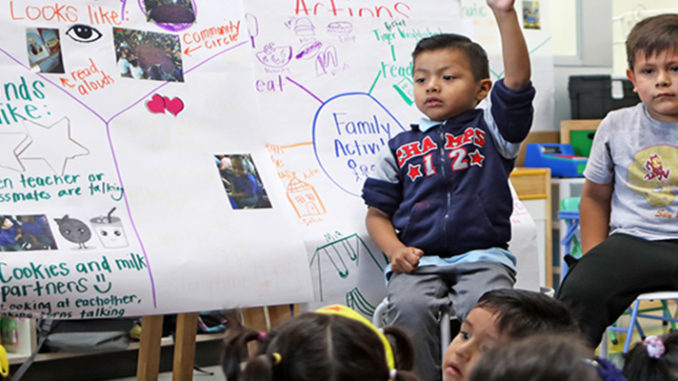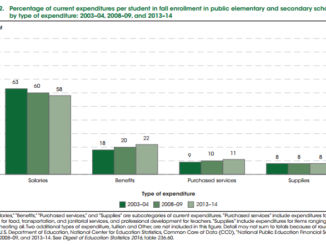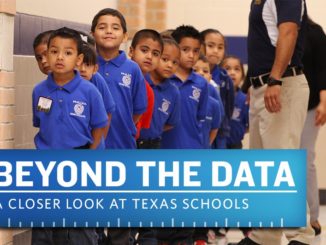
New state data reveals latest trends
California’s K-12 public schools this year experienced the biggest drop in enrollment in the past five years, according to new state data released Thursday.
While the number of students at traditional public schools has steadily declined, the number attending charter schools in the state continues to increase.
“This data provides a critical snapshot of all students in California, highlighting trends that show areas where students are improving, where they’re struggling and where additional resources are needed,” Tony Thurmond, state superintendent of public instruction, said Thursday.
A total of 34,135 fewer students were enrolled this school year compared to last, more than four times the drop experienced the prior year. Until this year, the biggest single-year decline in the past five years had been 8,783 from the 2014-15 to 2015-16 school year.
Significant trends over the last five years show an overall 0.8 percent decline in student enrollment statewide, from 6.2 million in 2014-15 to 6.19 million in 2018-19. Meanwhile, charter school enrollment grew from 544,980 students to 652,933 students during the same time period.
Research shows that by 2030, only 1 out of every 5 Californians will be a child, as a result of declining birth rates, said Samantha Tran, senior managing director for education at the nonprofit student advocacy group Children Now. In 1970, 1 out of every 3 Californians was under 18 years old.
“This has a huge implication in terms of our economy, as well as the composition of our population,” she said. “Every kid counts and it’s important that we support them.”
Mirroring California’s changing demographics, the percentage of Latino students at all public schools continues to climb — from 53.6 percent to 54.6 percent over five years. Meanwhile, the percentage of white students has dropped from 24.6 percent to 22.9 percent and the percentage of African-American students has fallen from 6 percent to 5.4 percent.
“Declining enrollment is a challenging issue for school districts across the state,” said Troy Flint, spokesman for the California School Boards Association, noting that it’s hard to predict how many students will leave and what schools will be affected. “That makes budgeting a difficult art, and that’s something that our districts are grappling with — both the larger ones because of the scale they’re operating at, as well as the smaller ones who don’t have access to a demographer and for whom one small change, relatively speaking, can have a big impact on their organization.”
The percentage of students statewide who are English learners dropped from 22.1 percent to 19.3 percent over five years, while the percentage of students reclassified as fluent in English jumped from 16 percent to 18.3 percent.
“The data continues to demonstrate the diversity we have in the state and the strength of that diversity,” Tran said. Even though the percentage of English learners is declining, she said the data reinforces the importance of supporting students through bilingual or multilingual programs.
Her organization is urging the state to fund training for teachers to fully implement the “English Learner Roadmap,” a set of guidelines adopted in 2017 that outlined a vision for educators to support students whose primary language is not English.
While the number of English learners has declined over the last five years, the percentage of low-income students based on their eligibility for free and reduced priced meals has increased slightly, growing from 60.4 percent of all public school students in 2014-15 to 60.9 percent this school year.
Compared to other states, California has the highest rates of youth poverty and English learners, yet has one of the lowest per-pupil funding rates, Flint said.
“Our districts, by and large, do not have the resources that we need to serve all of our students well and provide them with an education that prepares them for college, careers and civic life,” he said. “This problem persists, and it’s perhaps the greatest challenge to the future of California.”
The data also shows an increase in charter school enrollment from 9.2 percent to 10.6 percent of public school students statewide over the last five years. At the same time, there remain significant gaps between the two systems in the number of students they serve who are English learners, have disabilities or deal with other challenges, such as homelessness.
For example, while 19.8 percent of students in traditional public schools are English learners, only 15.1 percent of students in charter schools are not fluent in English this school year, according to the data.
Although charter schools have come under increased scrutiny recently as the governor and Legislature have considered bills to strengthen laws regulating how the schools operate, California Charter Schools Association spokeswoman Brittany Chord Parmley said families appreciate the alternatives they provide to traditional public schools.
“California’s charter public school sector is a response to families who are desperate for an alternative to schools that left them behind decades ago,” she said. “But it is not enough to simply provide something different. That’s why high-quality charter schools are public, free and open to all kids.”
.
The enrollment data is available on the California Department of Education Data Quest website under the “Student Demographics” category.
.



